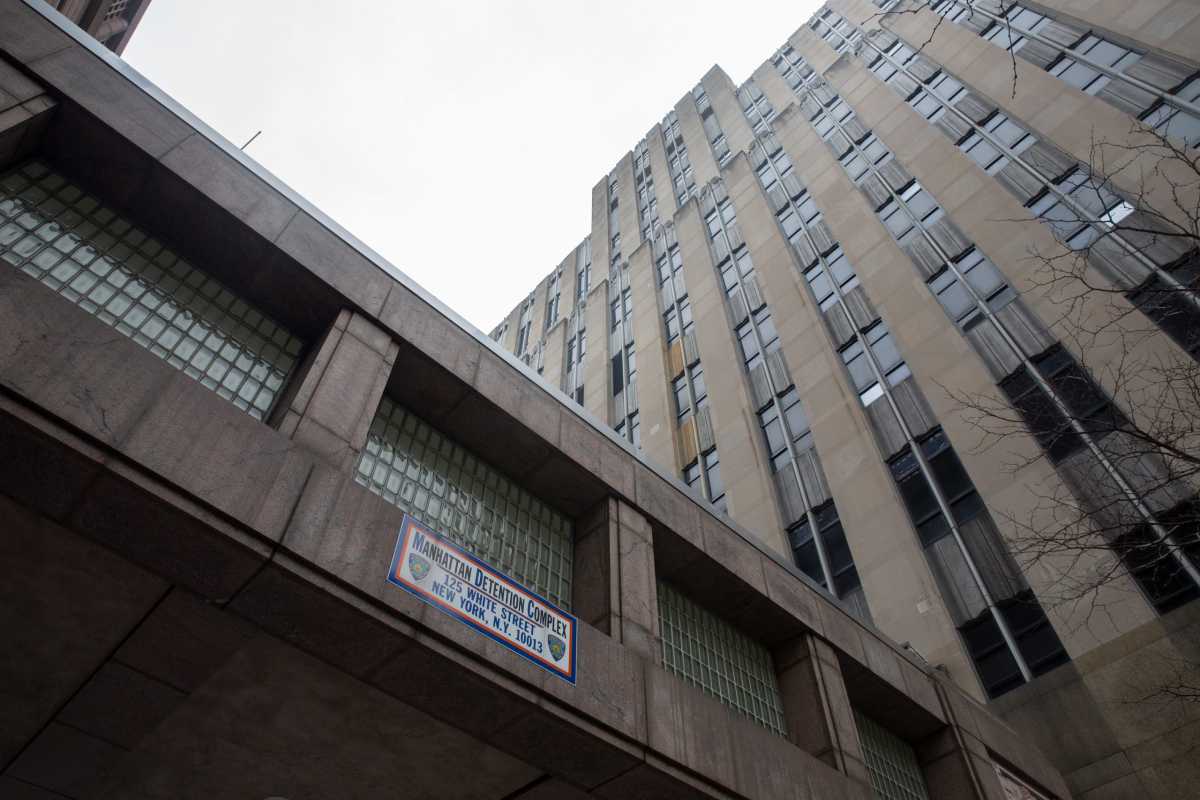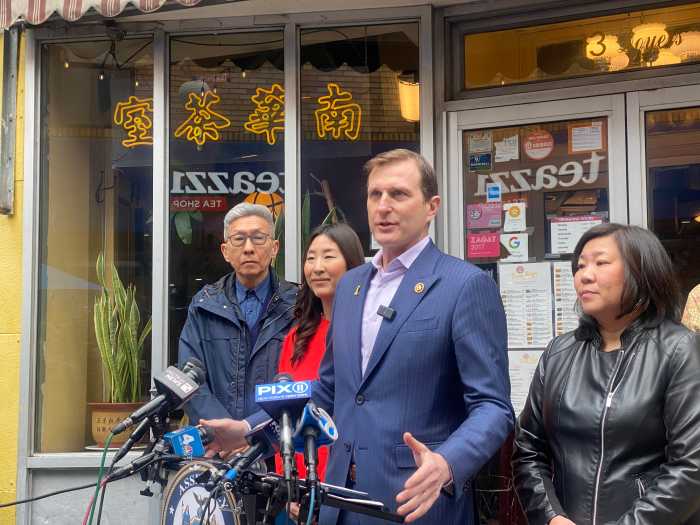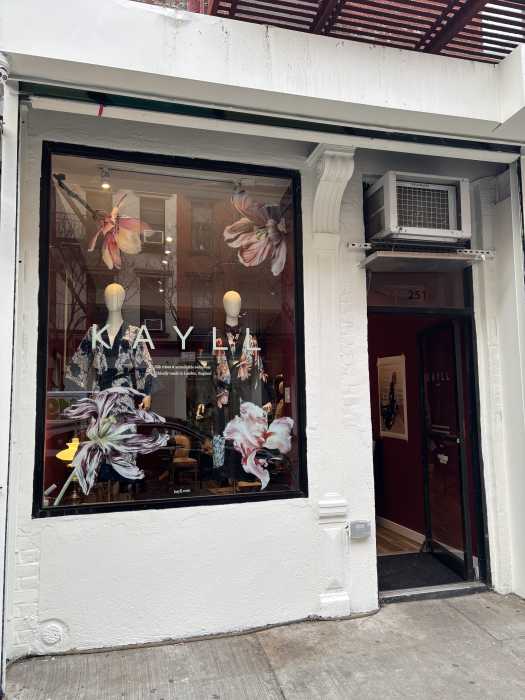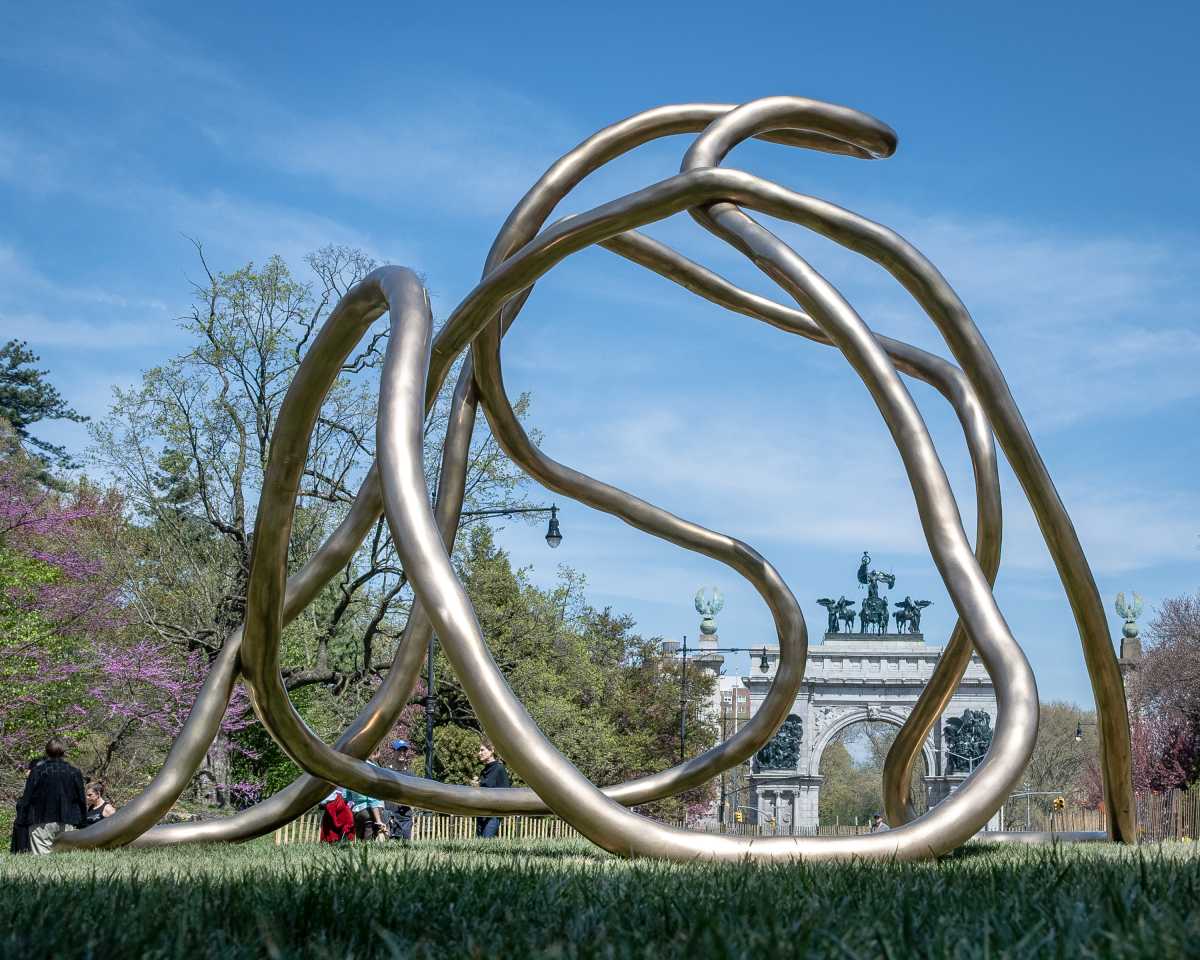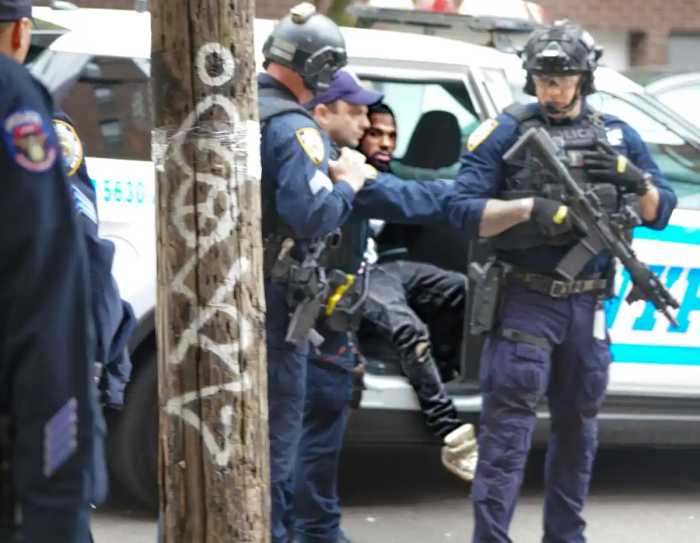By Rachel Holliday Smith, THE CITY
This article was originally published on by THE CITY
A judge’s ruling scrapping approvals for a planned new jail tower in Chinatown has snarled Mayor Bill de Blasio’s road map off Rikers Island — stalling a key part of City Hall’s borough-based jails plan as more legal challenges loom.
De Blasio’s office said it will appeal Monday’s order from Manhattan Supreme Court Judge John Kelley, which found environmental and land use approvals for the White Street facility invalid and barred construction from moving forward until new reviews and approvals are complete.
A representative for the Mayor’s Office of Criminal Justice said planning for the jail will proceed regardless.
“The city remains committed to closing Rikers Island,” said the spokesperson, B. Colby Hamilton. “We will continue to move forward with community engagement, as well as the procurement and planning process on all four sites where new facilities will be located.”
In addition to the Chinatown location, where the Manhattan Detention Complex now stands, the other jail sites are in Kew Gardens, Queens, downtown Brooklyn and Mott Haven, the Bronx. The Queens and Bronx sites also face lawsuits from locals.
The new jails are at the heart of the plan to close Rikers by 2026.
Chris Marte, co-founder of Neighbors United Below Canal (NUBC), which filed the lawsuit, called Kelley’s ruling a “historic victory.”
Historic victory not just for Chinatown as a community, but for the movement to end mass incarceration. The lawsuit of @NUBCanal, a group I co-founded with neighbors, has WON! The city has been sent back to the drawing board and CANNOT BUILD A NEW JAIL IN CHINATOWN! #NoNewJails pic.twitter.com/jQAaFGpOfV
— Christopher Marte (@ChrisMarteNYC) September 21, 2020
The lawsuit will not permanently stop the jail project on its own. If NUBC is successful through the appeal process, the suit would force a new public review and vote by the City Council and City Planning Commission.
The judge’s order is likely to push back that timeline significantly, according to George Janes, a land use expert who was hired as a technical consultant by the jail plan’s challengers in Manhattan and The Bronx.
“This is going to be a very substantial delay — at least six months, more like a year,” he said.
Haste Makes Waste, Judge Says
Kelley found that the city did not follow proper review procedures at the White Street site, which was the second location the city targeted for the new jail in Manhattan following local opposition to a site at 80 Centre St. The city had argued that the reviews it had completed on the Centre Street site were sufficient for White Street, as well.
Kelley ordered de Blasio’s team to start the review process again.
To Janes, that was the right call — to avoid “shortcuts” taken in planning, he said, by an administration eager to move forward with the Rikers plan.
“The city’s argument isn’t terrible except that it doesn’t fit in well with the process that we have so that we actually can’t do things quickly,” he said. “There’s a lot of reasons for that. It goes back to Robert Moses, where we used to do things very, very quickly — and regret them.”
As for the rest of the borough-based jail plan, the future is filled with potential pitfalls.
Already, city officials have pushed back the demolition timeline and procurement schedule for the jail plan due to COVID-19-related delays, THE CITY reported in July.
Elected officials and community members alike have raised questions about the multi-billion-dollar price tag of the plan, given New York’s ongoing budget woes.
And in court, more legal challenges are in play.
In The Bronx, a lawsuit is pending from the housing group Diego Beekman, which argues against a new jail there along similar lines as the Chinatown case. The group contends the city did not do a proper environmental review and only selected a Mott Haven site because of “political expedience,” according to court papers.
Homeowners in Kew Gardens have filed a separate lawsuit over the proposed jail in their neighborhood, also arguing that the environmental review for that site was flawed.
Urged to Stay Course
After Monday’s ruling, backers of the plan to open new jails urged City Hall to stick with the program.
Former state chief judge Jonathan Lippman, who led the independent commission that first outlined the plan to build four new jails and close Rikers Island, said in a statement Tuesday afternoon that shuttering the lockups on the island “is and urgent moral imperative, today more than ever” and urged the city to “press forward.”
Rikers Island, named after Dutch settler Abraham Rycken, was dubbed “The City’s Island of the Damned” by the New York Times in the 1970s Detainees are woken up at 3 a.m. or 4 a.m. to be brought to courthouses throughout the city. The day long process, where inmates are also kept in court bullpens for hours, is known among those behind bars as “bullpen therapy.”

It also takes loved ones hours to visit people on the 413-acre island, which is only accessible by public transportation via one bus line. The borough jail plan would eliminate that travel time by placing the new jails close to courthouses.
DeAnna Hoskins, president of JustLeadershipUSA, which lead the #CloseRikers campaign, said in a statement that the borough-based jail plan is “the most immediate and humane path to closing Rikers.” She vowed to challenge those in the “NIMBY (not in my backyard) movement.”
“We will not bow to those who want to keep incarcerated people out of sight,” Hoskins said. “We will not allow the NIMBY forces to subvert humanitarian efforts to stop the abuses on Rikers Island. As a formerly incarcerated person and someone who has visited Rikers, I know that delaying its shutdown is morally reprehensible.”
THE CITY is an independent, nonprofit news outlet dedicated to hard-hitting reporting that serves the people of New York.



